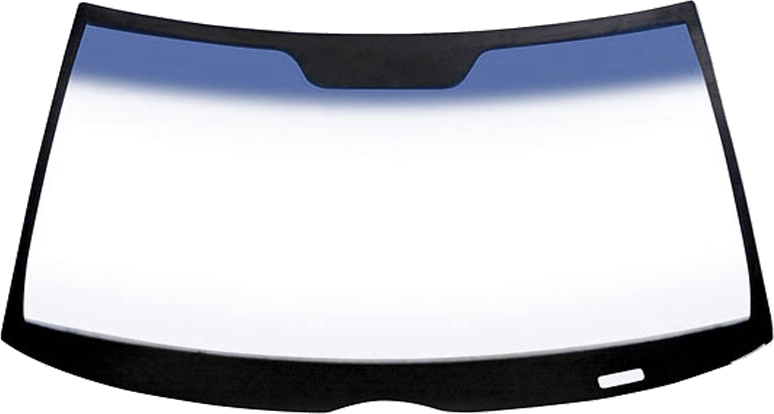
Windows are a vital visual opening to the outside world for both the driver and passengers. The first windows were just a flat panel of glass, but modern windows are made out of layers of materials such as plastic and more advanced polycarbonates. Some rear windows have defrosting elements built into them, which are just thin metal strips or conductive material which can quickly heat up the window. Windows are considered part of the body of the vehicle.
What Are Automotive Windows Made Of?
Modern automotive windshields are generally made of laminated safety glass, a type of treated glass. Two curved sheets of glass with a plastic layer laminated between them so that if the windshield is damaged, the broken pieces of glass don't damage vehicle occupants as much. "Spiderweb" cracking is typical of laminated safety glass. After being manufactured, a windshield is bonded into the window frame of a vehicle with urethane or butyl windshield adhesive, a glue made and packaged specifically for the job. This glue must be removed and replaced during a windshield replacement.
Automatic Windows
Some windows on the sides of the vehicle can open up by receding into the door or body of the vehicle. Initially, the only means of doing this was a crank, but many modern cars have button-operated windows. These work by moving a cable loop which is connected at one point to the mount the window is attached to. The electric motor is normally off, and the direction it turns depends on the polarity of the electricity flow, which is chosen by the button.
Window Tint
Window tint allows the owner to reduce the amount of light that gets into the cabin, and in come cases, improve privacy. Tints are typically made available in 70%, 50%, 35%, 20%, and 5%. The lower the number, the darker the tint, with the number being VLT, or visible light transmission. A 20% tint only allows 20% of the sun's rays from getting through the window.
Window Tint Legality
In my regions, some or all window tint is illegal because it makes it difficut for police officers to look inside vehicles. The legal amount allowed will differ state by state, and within states, it can even vary by window.
VIN Location
A common location for the vehicle identification number (VIN) to be located is behind the windshield in the bottom driver's side corner. It is often on a riveted-in-place piece of metal that can't be accessed without removing the glass. It is also becoming more common to etch the VIN into each glass panel on the vehicle.
Why Can We See Through Windows?
In the video above, James May says "Because glass is technically a liquid, the molecules within is are not ordered into regular crystals", which allows photons of light to pass through it.
How Windshields Are Made
Modern automotive windshields are built with safety in mind, and have vinyl lamination layers to keep shattered glass from flying everywhere in the event of an accident. Glass starts out as a flat sheet, cut by scoring and heating, then molded into shape (a more detailed explanation is available in the video above).
Some windshields get a black trim application to improve the look or hide inner pieces under the window, with a cut-out to show the vehicle's VIN. A few windows get a built-in mirror mount. When packaged for sale, some get new weatherstripping to allow for better replacement, since the old one is likely damaged by use and won't provide a good seal after removal.
How to Replace a Windshield
In the video above, Eric (of EricTheCarGuy) and Rich (from Kiss Autoglass) show the right way to replace a windshield on a vehicle. The vehicle shown in this video is a Honda Element.
- Cleaning Windows
- Sunroof
- Windshield Wipers
- Mirrors
- Car Doors
